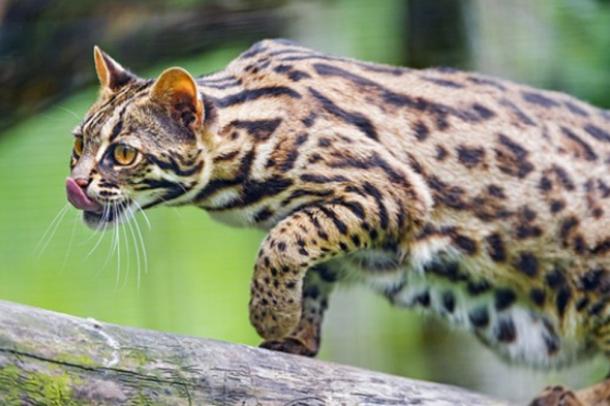The Bengal Cat
The Bengal cat is a fascinating breed, the result of the encounter between the exotic wild feline world and the sweetness of domestic animals. The story of these splendid cats unfolds between adventures, intuitions and love for nature.
The origin of the Bengal cat breed dates back to the 60s, when the American geneticist Jean Mill had the idea of crossing a specimen of Prionailurus bengalensis, a small Asian leopard cat, with a domestic cat. The main purpose of this daring experiment was to create a wild-looking domestic breed that could retain the sweet and sociable character of domestic cats, but with the spotted coat and liveliness of wild cats.
The first crossing took place between a female leopard cat and a male of domestic breed, giving life to the first specimens of the Bengal cat. Subsequently, through further crossings and selections, Jean Mill managed to stabilize the breed, obtaining cats with consistent morphological and behavioral characteristics.
In 1983, the breed was officially recognized by TICA (The International Cat Association) and has since gained international popularity. Today, the Bengal cat is one of the most appreciated and sought-after breeds by cat lovers all over the world.
The exotic beauty of the Bengal cat is not the only characteristic that makes it unique: this breed is also known for its intelligence, liveliness and affection towards humans. Bengal cats love interacting with people, playing and climbing on any available surface. Their coat, with its characteristic spots and unmistakable glitter, makes them even more fascinating and irresistible.
The history of the Bengal cat is the testimony of how the love of nature and the passion for felines can lead to the creation of a unique and fascinating breed, capable of conquering the heart of anyone lucky enough to meet his gaze.
Bengal Cat Physical Standard
The official physical standard for the Bengal breed was first registered at TICA (The International Cat Association www.tica.org).
In general, the physical build of this cat should resemble that of it’s ancestor, the Asian Leopard Cat (WK#1).
Body
Athletic, solid and muscular, with a long torso. Very strong and visible muscular structure. The Bengal cat’s ancestor, the Asian Leopard Cat, lives on trees and among vegetation, and in order to survive in the wild and hunt it needs powerful hips that enable it to jump from branch to branch, hunting preys that live on trees or small birds. The Bengal cat has inherited this feature that is among the requirements for competing in and winning exhibitions, contests or awards.
Bengals have a marked feline appearance because the rear part of the body is higher than the front and this allows the tail to hang low and swish in a soft, sloping way, just like the Asian Leopard Cat’s tail. In other domestic cat breeds, the hips are level with the rest of the body and this leads them to keep their tails raised.
In TICA’s standard the required body size is precisely defined as being medium-large, with significant variations between large males and small females.
Head
The ideal size of a Bengal’s head should give the impression of being slightly small in proportion to the body. According to the standard, the head should be wedge-shaped, with an oval skull which protrudes between the ears. The bridge of the nose extends above the eyes creating a seamless profile all the way to the tip of the nose.
Heads with a short muzzle, excessively wide jaws or a break in the nose profile are undesirable.
Muzzle
The TICA standard requires full, prominent whisker pads. In profile, the chin should aligned with the the tip of the nose. Pronounced cheekbones. The chin shouldn’t be prominent but strong and full
Ears
The standard requires the ears to be placed in a slightly lateral position with respect to the skull, which protrudes between the ears. They should be cupped at the base. Short ears are desirable while small one with pointed tips are not. The tips should be rounded. They should be medium-small with rounded tips in both cases.
Eyes
Eyes set back into the face, closer to the nose and mouth than to the ears, thus allowing for a wider forehead, are desirable They should be slightly almond shaped, not too round to avoid a frightened look.
Nose
The curve of the nose should flow freely from the skull to the tip of the nose. The tip of the nose should be broad, ranging in colour between dark pink and brick red.
The curve of the head should flow towards the nose with no break.
Tail
The standard describes the tail as sloping down from the cat’s raised hips, hanging low.
Medium length and thickness, tapered at the end and with a rounded tip. It should be neither fluffy nor thin or sparse.
Legs and feet
The feet’s knuckles should be prominent and the legs should give a general impression of strength and agility.
The rear legs are longer than the front ones giving the Bengal a light, springy step.
Generally boning should not be delicate or too fragile or too sturdy.

